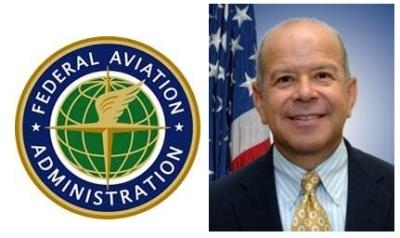Outlines Plans In Speech To The Wichita Aero Club
In a speech to an audience made up of many of the country's biggest GA manufacturers, acting FAA Administrator Michael Huerta said Thursday that he has put in motion a plan that could eventually mean sharp reductions in the costs and time associated with the certification of new general aviation airplanes.

Speaking to the Wichita Aero Club, Huerta said that the ARC charged with looking at Part 23 is taking a fresh look at how the agency certifies general aviation aircraft. "We believe there is a better way for the future – one that retains the safety lessons we’ve learned from the past while providing for a more proactive and flexible approach to certification," Huerta said. "Instead of specifying a design – we are specifying a safety outcome that we would like to see."
Huerta said that the committee has suggested switching from criteria based on an airplane’s weight and propulsion to criteria that correspond to the aircraft’s performance and its complexity. "For example, take the test procedures for verifying the strength of the wing of an airplane," he said. "If we can all agree on one way to test an aircraft wing, then each country does not have to write the test procedure itself.
"Nowadays, you may have to do the test slightly differently in each country, and this takes a whole lot more time. And it costs literally millions of dollars to make these slight changes that will account for country differences.
"The new approach saves time and money for companies because it’s one testing standard across the globe – whether it’s the United States, Canada, Brazil, Europe, New Zealand, China or Russia."
Huerta said that the FAA would continue to exercise the authority to certify whether or not an airplane design met the standard. But industry consensus standards that would apply anywhere in the world would be used.
"These changes will allow the aviation industry to adopt new technologies more quickly and this means enhanced safety for everyone," he said.
Huerta also talked about the use of non-required safety equipment in GA airplanes. "In the last decade, the experimental aircraft fleet has doubled and the certified GA fleet has decreased by 10 percent," Huerta said. "That’s partly because the experimental segment of the industry is where a recreational aviator can more afford to buy a new aircraft. And the owner can then add safety equipment that’s much newer than in the traditional fleet.

"We need to find a better way to allow good, life-saving products into existing aircraft so that aviators can upgrade their certified plane, rather than having to go with an experimental aircraft to get new safety equipment.
'The rulemaking committee is grappling with this issue as we speak."
A final topic was the transition to unleaded aviation fuel, which affects the more than 160,000 existing aircraft in the United States that depend on 100 low lead fuel. "We sat down with all the interest groups and agreed upon a path to replacing the fuel. The committee’s report came out this year. And we appreciate very much the work of everyone on the committee. We are considering all of the recommendations very carefully," Huerta said. He pointed to Cessna's recent introduction of a diesel engine option in part of its GA line.
He also pointed out that the industry has a role to play in making these innovations mainstream. "Whether we’re talking about certification or AvGas or incorporating the latest NextGen displays into the existing GA fleet, collaboration is the key to our success as an industry. The aviation industry has always been characterized by two things: innovation and change. And we know that we do our best when working in a partnership with all of our stakeholders," he said.
 ANN's Daily Aero-Term (04.20.24): Light Gun
ANN's Daily Aero-Term (04.20.24): Light Gun Aero-News: Quote of the Day (04.20.24)
Aero-News: Quote of the Day (04.20.24) ANN's Daily Aero-Linx (04.21.24)
ANN's Daily Aero-Linx (04.21.24) Aero-News: Quote of the Day (04.21.24)
Aero-News: Quote of the Day (04.21.24) ANN's Daily Aero-Term (04.21.24): Aircraft Conflict
ANN's Daily Aero-Term (04.21.24): Aircraft Conflict




